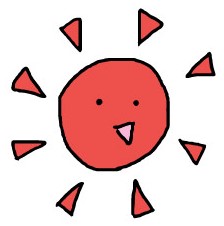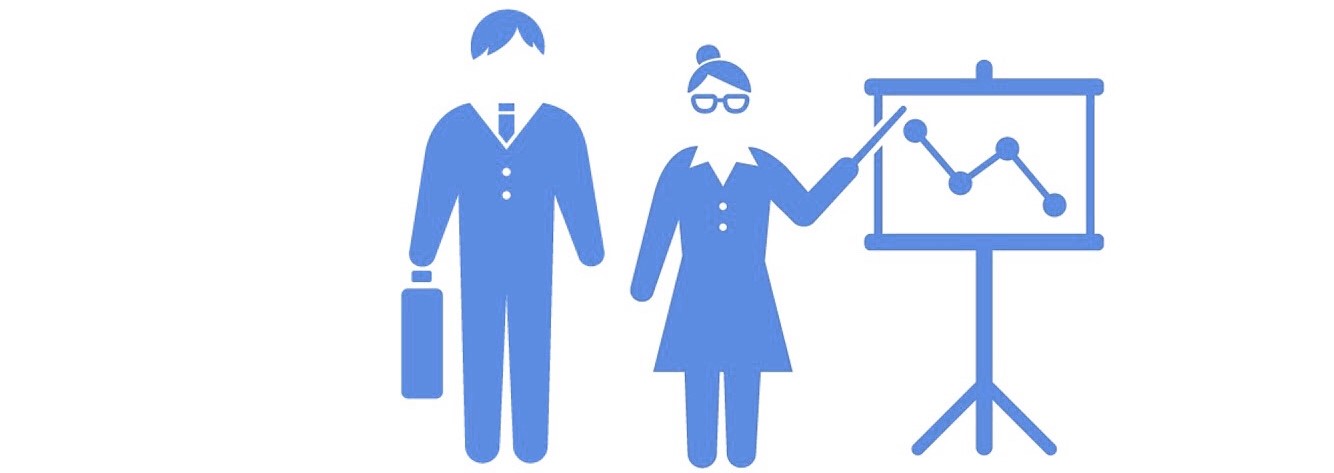Analysis by age groups
 What characteristics of heatstroke do each age group present?
What characteristics of heatstroke do each age group present? We used two sources, the dataset by Japan Meteorological Agency and the number of people transported by ambulance due to heatstroke reported by FDMA (Fire and Disaster Management Agency).(Click here to see About Calculation formula for analysis)We used the data in the past eight years- from June 1 to September 30 from 2010 to 2014, and from May 1 to September 30 from 2015 to 2017.
We analyzed the three age groups-juveniles, adults and elders. The results are summarized in the chart below.

Chart Characteristics of Heatstroke by Age Groups
* Reffering to the report in 2016 by National Institute for Emvironmental Studies, we surveyed the top three of situation getting heatstroke. Other contents based on our analysis which analyzed the data of heatstroke patients by EMS by FDMA.

・As for the days when the rate of heatstroke patients by EMS is high, it does necessarily mean there were the most heatstroke patients on those days.
・The months when the rate of heatstroke patients by EMS is high refers those in which indicates the total number of days when the rate of people by EMS by age groups is 50% or more in the past eight years.
Juveniles:Juveniles (May) 1176 days, (June) 889 days, (July) 576 days, (August) 445 days, (September) 850 days
Adults:(May) 2242 days, (June) 2493 days, (July) 2633 days, (August) 3211 days, (September) 2437 days
Elders:(May) 4131 days, (June) 3873 days, (July) 5851 days, (August) 6035 days, (September) 3059 days
* As the available data in May was restricted in the last three years, the data in the chart was modified by multiplying 8/3 to the datatime 8/3 for this research.
Heatstroke shows different symptoms in different age groups. Understanding these differences could be the key to choose effective treatments.
 ● Juveniles
● Juveniles
Juveniles should pay attention to heatstrokeduring exercise. Because their perspiratory gland is not fully developed, they may not be able to adjust their body temperature quickly enough to air temperature. In addition, they are greatly affected by radiant heat because of their height. In particular, the last few days of Golden Week holidays in May, during rainy season and summer vacation are risky period of time for this age group. It is considered that their body are not used to the heat, a lot of exercises are required in those periods.
In addition, as seasons change, young people are more likely to get sick and feel exhausted, which also increases the risk of heatstroke.
Furthermore, as the following chart indicates, in this age group, the correlation between heatstroke patients by EMS and temperatures or WBGT (the index showing the risk of heatstroke)
is weaker than that of other age groups. Even in general it is not when we put much emphasis on calling attention for heatstroke, there are still possibilities that juveniles get heatstroke.
Correlation coefficient between heatstroke patients by age groups and weather conditions

… Correlation coefficient is the index which indicates the relationships of two variables.
Informing the time when juveniles should especially pay attention to heatstroke at school is very important. This means, “the practice terms of sports festival during the changing season" should be known by everyone at school.
According to the charts above, many juveniles get heatstroke in public. Moreover, it is reported that juveniles hesitate to tell their health conditions when it goes bad. Thus, those who work with juveniles should pay attention to their symptoms, such as the complexion, or the amount of perspiration. We suggest that raising this awareness among those who work with the age group closely such as parents and teachers can prevent effectively young people getting heatstroke.
 ● Adults
● Adults
Adults get excertion heatstroke during work. One of its features is that even healthy or young people can get it easily by overdoing in hot weather. Its mainly reason is mass sweating, so take water and moderate breaks are essential. As you know, adults have to work regardless of the abnormal heat so that the number of heatstroke patients tend to increase as the temperature rises. In order to prevent it, have a healthy lifestyle, such as never failing to eat three meals particularly when the heat continues. According to our analysis, the rate of getting heatstroke is high in the rainy season which tends to be careless, such as the day that is the maximum temperature is about 25℃ and the humidity is 70% or more.
Many people prioritize their work rather than their own body. However, it is important to take measures at the initial stage. This is because, in our opinion, the earlier we deal with heatstroke, the sooner we can recover.
 ● Elders
● Elders
The risk of heat stroke in daily life is higher than that of other age groups. Elder’s characteristics are no early symptoms of heatstroke and the incidence of heatstroke in houses is high. The discovery tends to be delayed when those who spend time alone in the room get heatstroke.
When the severe heat continues, elders’ appetite and stamina dwindle over a few days. Moreover, the fatigue is accumulated even if refraining from the hard working during the hot weather. Therefore,
after the the peak of the heat, the elder’s rate of heatstroke patients are often still high. Besides this, as the rate of elders by EMS is high in early May, difficulty to adapt to the heat can be perceived. The risk of heatstroke for elders increase during the beginning of the hot season due to the large difference in temperature.
The amount of moisture in the body decreases gradually as the age increases, 70% for juveniles, 60% for adults, and 50% for elders. Especially for elders, because of the decrease the amount of muscle mass and intracellular liquid volume, the water retention rate has declined.
In addition to this, dehydration is easy to proceed. Difficulty to notice the thirst and avoidance of drinking water frequently. Thus, it is effective
to intake water and salt before feeling thirsty.
The way of thinking like “I don’t have to be worried because I was OK when I was young” might be dangerous. It is inevitable to understand correctly about the drop of the function of the body by piling up age, and the damage of heatstroke becoming more and more serious.
 What areas people should pay attention to varies from age to age!
What areas people should pay attention to varies from age to age!Most people get heatstroke in places they spend most of their time. It also links with daily life style!
For juveniles, please pay attention during exercise. For adults, please pay attention during work. For the elders, please pay attention to your daily life in general!
